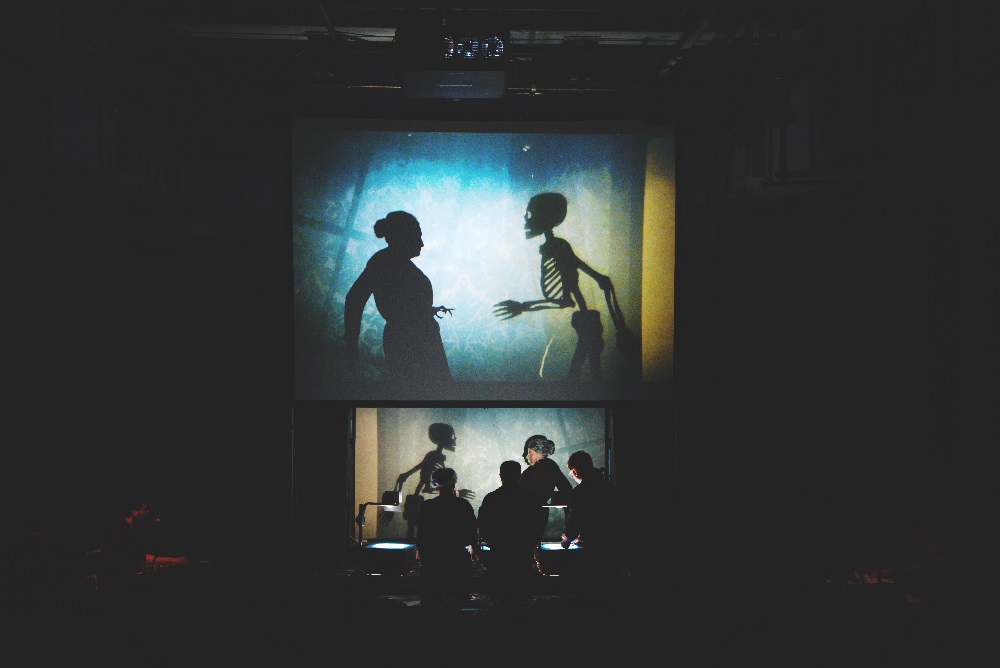6 Shows That Perfectly Combine Tech and Text
Face tracking, augmented reality, wearable lights—incorporating technology onstage has never been easier or cheaper, and it can serve rather supersede storytelling.

It is a truth universally acknowledged that you can either have amazing stage effects or you can have story, but not both. For the inaugural edition of what will be an annual Design & Tech issue, we’ve set out to dispel that myth. From magicians becoming storytellers to technology taking centerstage, from designers seizing the means of production to playwrights making work with robots, there’s more to the work of stage visuals and their technical realizations than creating beautiful surfaces or whirring machines.
Design and technology, in short, need not be an afterthought or a gimmick. As projection designers, technical personnel, magicians, and sound designers could tell you, it’s clear that the sweat and labor that go into creating stage effects may be invisible to the audience. But when done with deliberation and purpose, it is as integral to a play’s essence as the text.
#Special Section
Face tracking, augmented reality, wearable lights—incorporating technology onstage has never been easier or cheaper, and it can serve rather supersede storytelling.
From Teller’s ‘Tempest’ to plays from Andrew Hinderaker and the House Theatre of Chicago, magicians are finding new ways to use their illusions.
The New Orleans-based studio founded by local Jeff Becker will house 3 theatre ensembles and focus on design-driven productions.
For a musical at the Old Globe, we were tasked with creating a structure that could rotate and withstand a downpour. The solution? A self-driving house.
Robots onstage are less likely to replace humans than to heighten the contradictions of the human condition in a technological age.
Threads from Broadway, tours, and the Met hang out between engagements at an Astoria warehouse that’s now accessible to shows all over the U.S.
Actors Theatre of Louisville brought ordinary reality to new heights in Ruhl’s latest play, which is a tribute to her mother.
The invisibility of stage designers cuts both ways: They lack for recognition (see this week’s Tonys), but they can also build diverse careers—if they get the chance.
This coming Sunday the Tony Awards will again overlook the contributions of sound designers—an absence that screams louder each year.